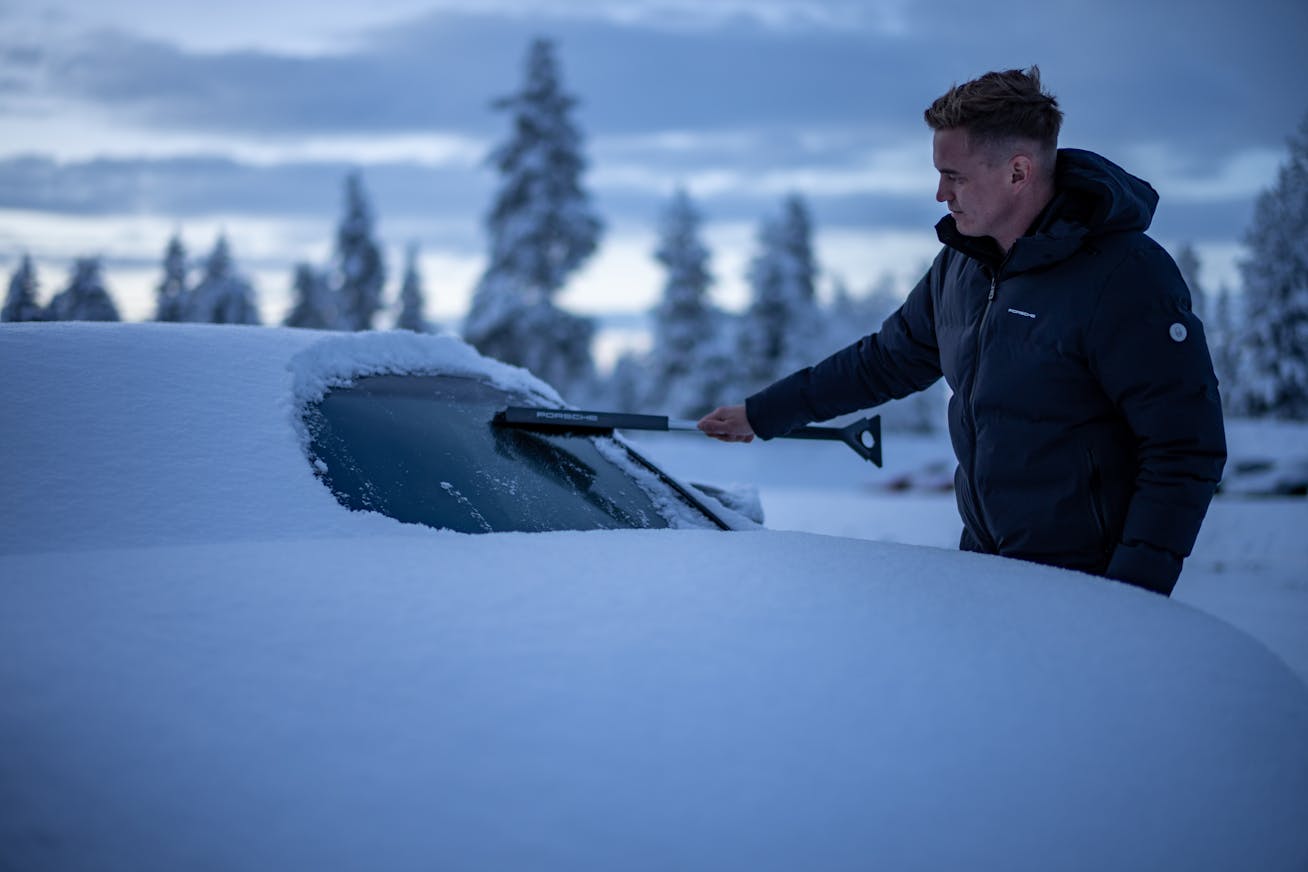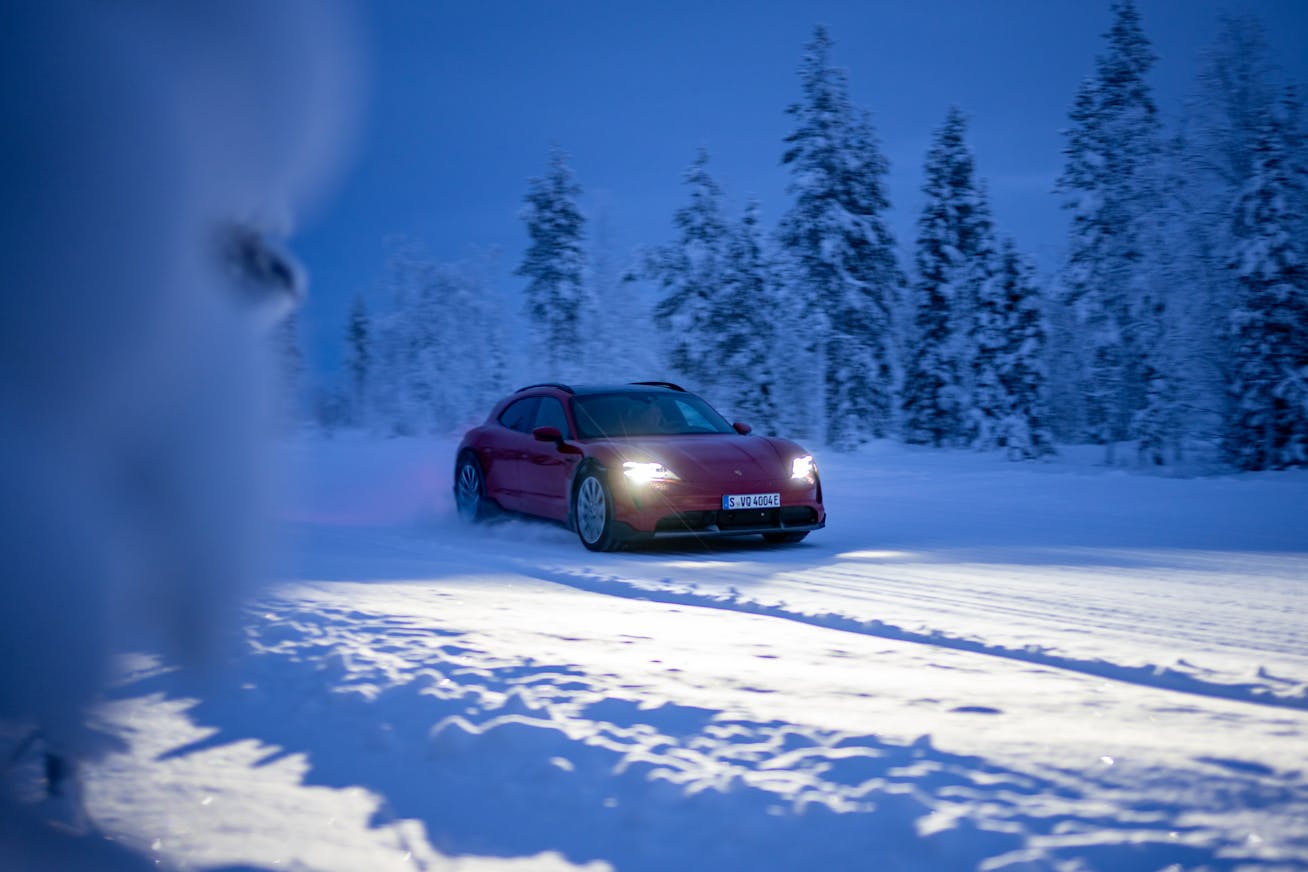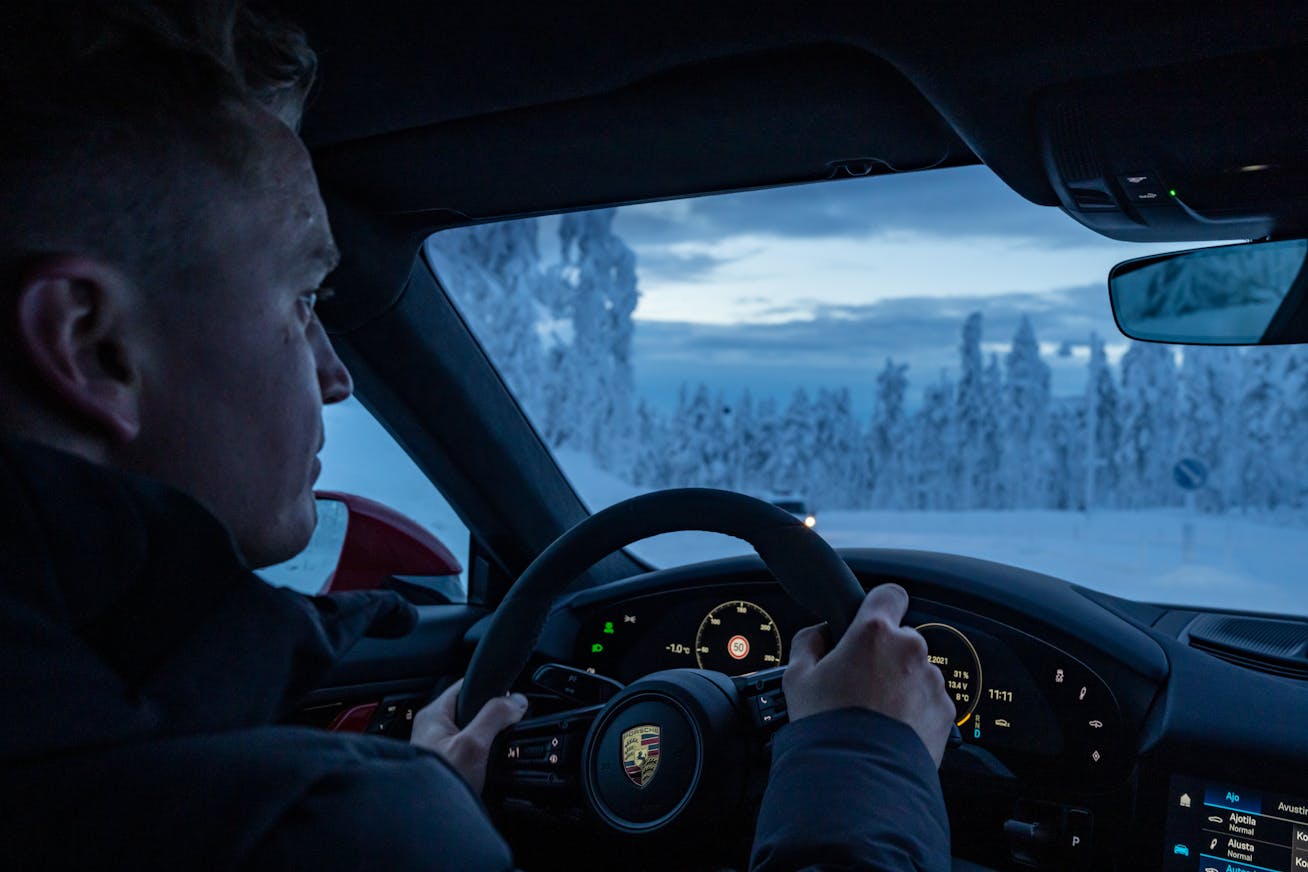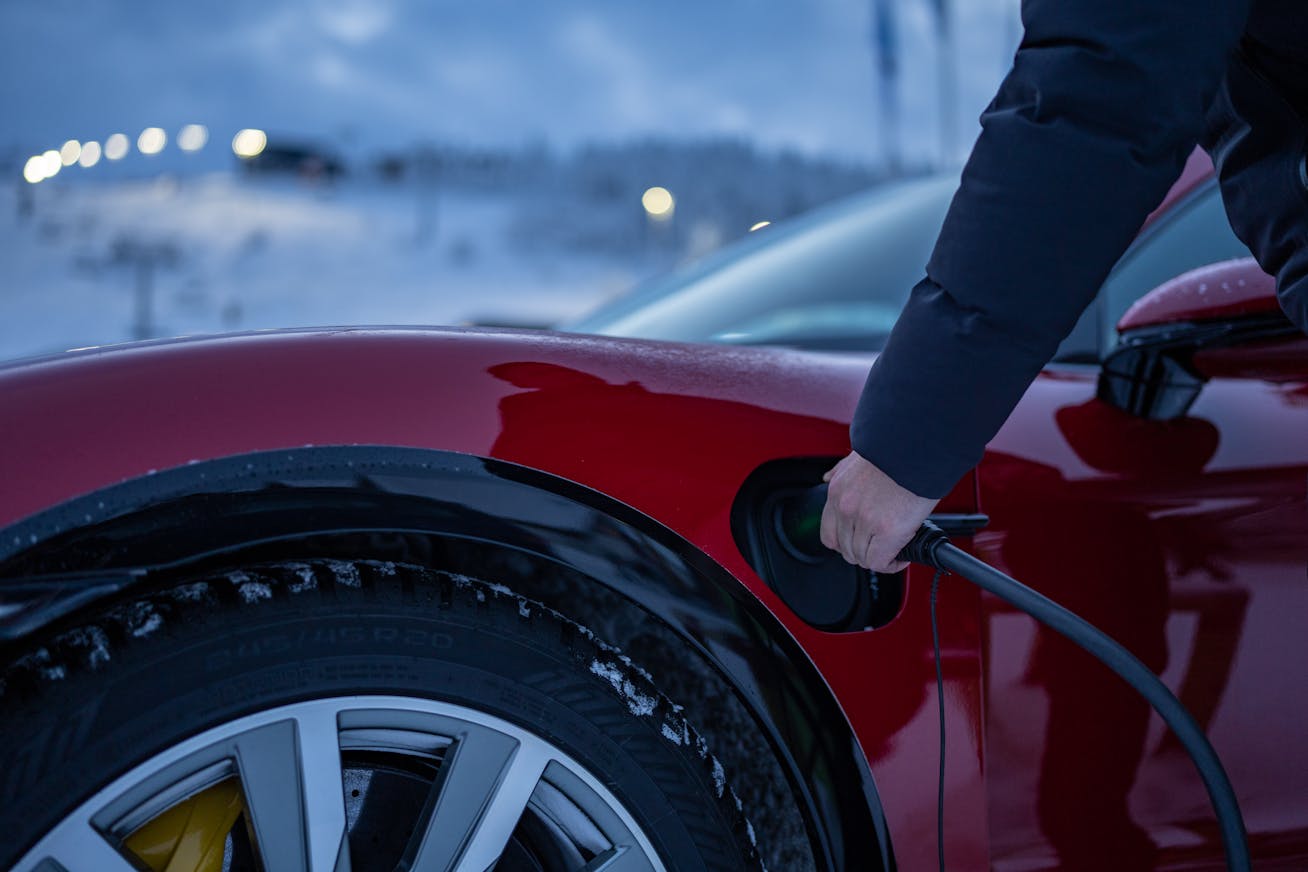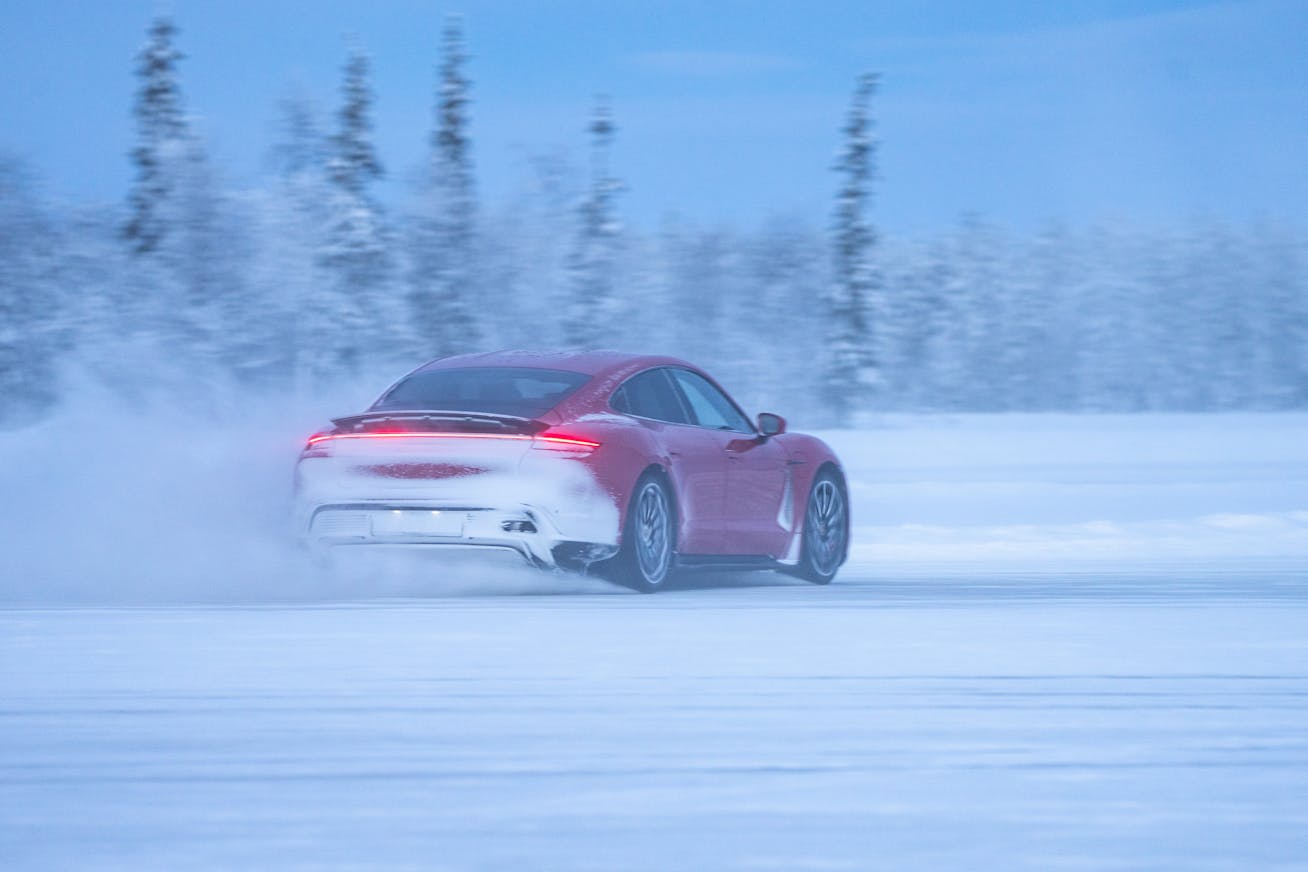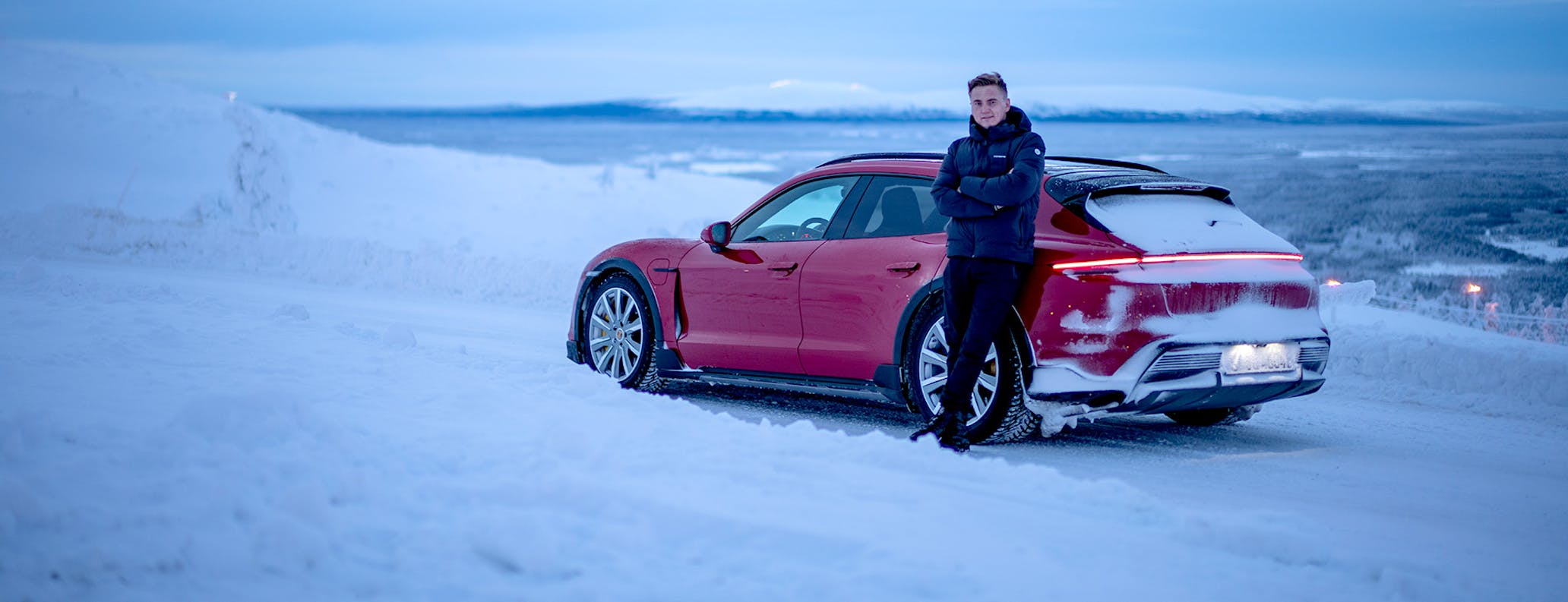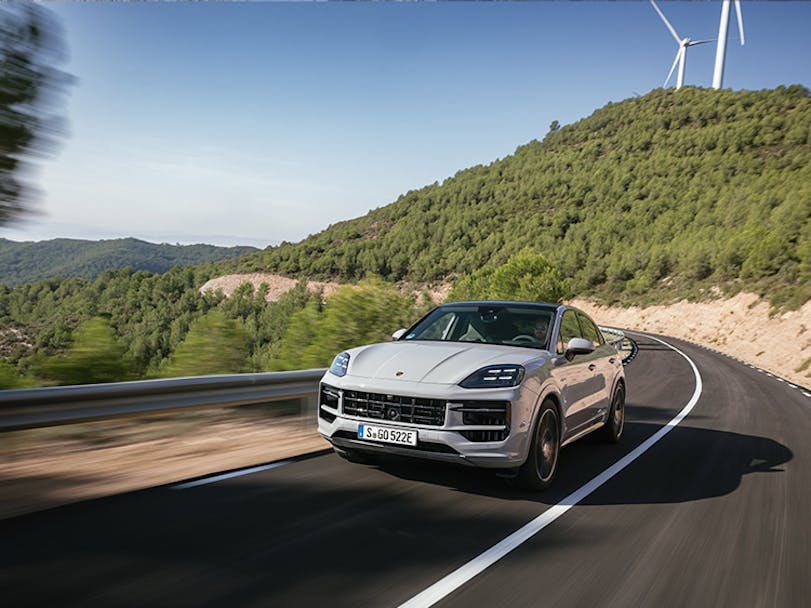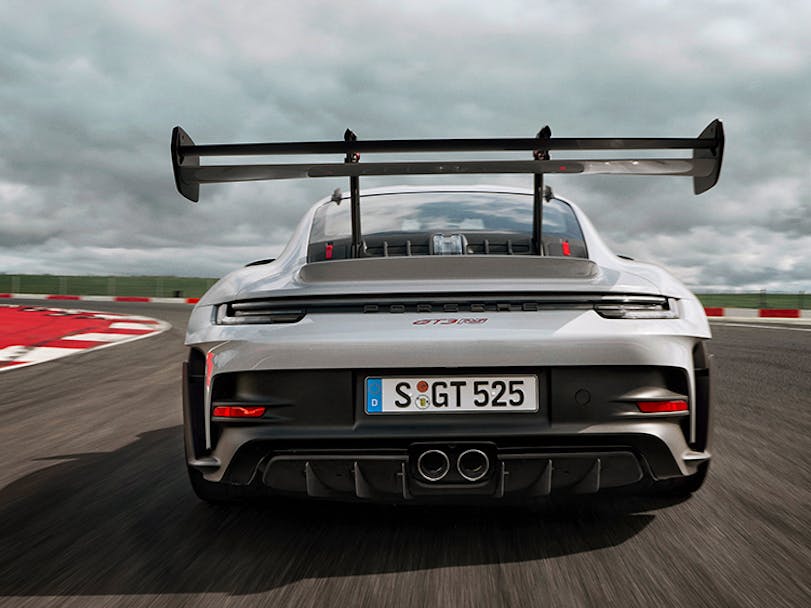Stories
Experience
Mobility
Design
Dreams
Innovation
Culture
A Porsche professional driver on how to drive an electric car in winter
An expert guide with the lead instructor at Finland’s Porsche Ice Experience
February 4, 2022 | 8
min read
Snow and ice are among the biggest challenges for any driver. But, says Porsche driving expert, Jukka Honkavuori, a combination of basic physics and keeping your cool goes a long way to conquering your fears and keeping you safe
Even for experienced motorists, driving in ice and snow is perhaps the most challenging set of conditions you will ever face. As with most things in life, the more you do something, the better you tend to get. So when it comes to learning how to drive safely, appropriately and getting tips on car control, there are few people better to ask than Jukka Honkavuori. For at least half of the year, Jukka works in the sort of wintry driving conditions that most of us only experience on a few occasions in our lifetime, if we’re lucky. Growing up in northern Finland, ice and snow are commonplace for Jukka for a significant portion of the year. In fact, he has made a career out of it – Jukka is currently lead instructor at the hugely popular Porsche Ice Experience in Levi, just a couple of hour’s drive north of his home town of Rovaniemi. Up here, each year he teaches thousands of people from all over the world how to drive in snow – and, in particular, how to instigate and then maintain a drift on one of the numerous icy courses at Levi. As Jukka himself says, drifting a car on ice is one of the most fun things you can do on four wheels. His talents also extend to the racetrack too – he also drives a 911 GT3 Cup in Porsche Supercup races, often competing on F1 race weekends. “It’s not typical to become a race driver or a Porsche instructor when you come from this part of the world,” says Jukka. “You go into skiing or ski jumping, cross country skiing or snowmobiling.” Luckily for us, a unique combination of professional driving skills and a lifetime spent in extreme wintry conditions means that Jukka is the perfect person to tell us all you need to know about how to drive a Porsche car in ice and snow. Jukka Honkavuori, lead instructor at the Porsche Ice Experience, makes his way to the Porsche Taycan Cross Turismo | IMAGE © Daniel Laaksonen Why it’s important to get a grip There’s nothing more important when driving in ice and snow than understanding how to drive to achieve and maintain the very best grip and how to regain control if it is lost. Most accidents in ice and snow happen when you lose grip, so your tyres no longer work effectively – or at all. Jukka talks about the “friction circle”, a diagram that all racing drivers learn about from day one, which charts the levels of grip a tyre experiences when under different forces, whether that be lateral (when you are cornering) or longitudinal (when braking or accelerating), and how that affects the balance and direction of a car’s progress. As soon as you lose grip in ice or snow, your car tends to understeer or oversteer when cornering. That means, on a left-hand corner for example, your car will be pushed away from the apex of the bend. This occurs because you are losing grip on the front axle, says Jukka. And to remedy that means braking – firmly and progressively – in order to transfer weight to the front axle in order to help regain grip. Jukka grew up close to the Porsche Ice Experience in Levi, Finland | IMAGE © Daniel Laaksonen Stay calm, don’t panic and do all the right things behind the steering wheel Jukka Honkavuori | Porsche Ice Experience lead instructor on how to drive in ice and snow Keep calm and watch your steering There’s a temptation, adds Jukka, to initially remedy any understeer by violently steering in the opposite direction. But this is just about the worst thing you can do. One of the biggest tips he gives to drivers that he is instructing when they are driving a Porsche car in ice and snow is the need to keep your cool in such conditions. If your car is understeering, your first action should be to brake, not steer, to give you the best chance to come out of it in a positive way. So stay calm, make the right decision and once you’ve slowed down, you can then steer yourself back onto the correct track. Why is it important to prevent steering your car in the opposite direction in cases of understeer? Jukka says that when your car eventually does transfer its weight to the front of the car and regains grip, if you’ve already engaged full opposite lock, you can put your car in an aggressive oversteer situation – which is very dangerous, particularly on public roads. This is when spins can happen. “Stay calm, don’t panic and do all the right things behind the steering wheel,” is Jukka’s simple advice here. When driving in very icy conditions, keep calm, take it slowly, be gentle | IMAGE © Daniel Laaksonen Keep a lid on your speed At the Porsche Ice Experience, Jukka spends his days teaching customers the ultimate in car control, helping give a whole new meaning to the term ‘snow drift’. It is some of the most fun you can have in a car. Intriguingly, that doesn’t mean being heavy on the accelerator or carrying excessive speed. In the case of speed – and this is especially true on public roads – too much of it when driving in wintry conditions will always increase the chances of you finding your way into trouble. The safest way to drive a Porsche car in snow and ice safely is to reduce your speed considerably when compared to how you’d drive in, say, perfect road conditions in the height of summer. Not only are stopping distances greatly increased when driving on icy roads, other road users are more unpredictable at these times too, explains Jukka. Even if you are an experienced driver, there will be others who aren’t. And if there is snow falling and visibility has decreased, regulating your speed is a must. It sounds simple but over-confidence and driving too fast in snow and ice increases your chances of an accident – and if the worst does happen, and you start losing control, the time you get to rectify that is severely reduced. As well as an instructor for Porsche, Jukka is also a highly accomplished racing driver, regularly competing in Porsche GT3 racing | IMAGE © Daniel Laaksonen Read the road, read the conditions and look far ahead The levels of grip you experience on icy roads, explains Jukka, is never a constant one. You need to stay alert to constantly changing road conditions, so look at the carriageway ahead to spot impending dangers. That means reading the surface of the road to see subtle changes in colour or its look. Speaking of which, one of the simplest but most important things you can do when driving a Porsche car in ice and snow is to look as far ahead as you can, he adds, helping you to anticipate any issues much earlier. It’s something that race car drivers learn to do, whatever the weather, at an early stage in their development – they look way up the track ahead so they can react to any challenges quickly. “If your eyes are only fixed just in front of the bonnet,” says Jukka, “you increase the chances of you missing something that could spell danger.” He also recommends adjusting your seating position too. Hands in a good nine-three (ie, quarter to/quarter past) position on the steering wheel, make sure your feet are close to the pedals at all times and set the seat in a position that you feel comfortable with and gives you clear visibility ahead. The rules for driving electric cars like the Porsche Taycan in icy conditions align with those for petrol-engined vehicles | IMAGE © Daniel Laaksonen Studded tyres, winter tyres or normal road tyres? For most of the world, the thought of having a different set of winter-appropriate tyres to put on your car in the darkest months seems like an extravagance, but they can be a lifesaver where Jukka lives in Finnish Lapland. Here, where the Porsche Ice Experience takes place, studded tyres are the order of the day – you’ll hear them on cars as they rumble past and give excellent grip especially in conditions where fresh snow lies on top of layers of thick ice. Further south, around Helsinki for example, standard winter tyres with their increased grip tend to be sufficient, due to less ice and snow on the roads. The treads of winter tyres have deeper grooves and are also made from a different compound than standard tyres, which both help improve grip. For those of us who only see snow and ice intermittently, they are generally not necessary, but for people like Jukka, or anyone who makes lots of snowy driving trips, you will never go back to normal tyres once you’ve experienced its winter counterparts. At the Porsche Ice Experience, vast areas of run-off means that Jukka can help drivers achieve higher-speed driving more safely on icy surfaces | IMAGE © Daniel Laaksonen Sometimes accidents do happen But what happens if you have an accident in the snow, and your car leaves the road? Jukka says that if you are unable to correct a sliding car, the last thing to do in order to remedy the situation is to step on the power. “Snow is rather like glue in these instances,” he explains. If you find yourself buried in a snow bank, for example, the best way out is usually to reverse in exactly the opposite direction you entered it. But if help is on hand to tow you out, he adds a warning to keep the windows of both the stricken and towing vehicles closed and ensure that anyone near the car keeps a good distance. Why? Because if a tow rope breaks or the hook flies off, serious damage can be done. And, Jukka adds, while there’s a temptation to be in reverse gear when you are towed out of snow, instead keep the gearbox in neutral. Accidents can happen if a car keeps on reversing when it’s been pulled clear. Take a common-sense approach when driving a Porsche car on ice and snow Finally, always remember those practical tips to help limit the impact of getting caught out when driving a Porsche car in ice and snow. That means pack an emergency warning triangle (although it’s the law in many countries), even a shovel to help dig your way out of trouble, keep a blanket in the boot and perhaps even some provisions. Be alert. Be prepared. But most of all stay calm and in control.
Drift at the Porsche Ice Experience
Learn more
Continue reading
How much is a Porsche Cayenne?
The current Porsche Cayenne builds on the success of its predecessors with new hybrid engines and a host of other improvements and innovations. Find out how much the Cayenne costs and discover more about the sporty SUV model
Read more
How fast is a Porsche 911 GT3 RS?
In 2003, a car was revealed that raised Porsche performance to new levels. Subsequent versions of the 911 GT3 RS have helped build its fearsome reputation as a road-going sportscar that loves doing battle on the track
Read more
How much is a Porsche 718 Boxster?
Find out how much the Porsche 718 Boxster costs, and more important details about this two-seater, mid-engined roadster
Read more

